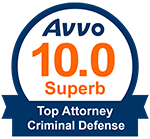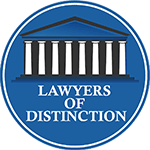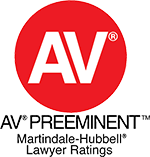The attorneys at The Blanch Law Firm have decades of experience dealing with health care allegations and can help you navigate your case for the best possible outcome.
In the growing opioid epidemic, doctors and clinics who manage pain are seeing a vast increase in legal action. The government, particularly the Drug Enforcement Agency (“DEA”), is going after a great many of these medical professionals in an attempt to eliminate “pill mills.”
The charges related to inappropriate, controlled substance prescriptions have serious repercussions. You could be looking at anything from a tainted reputation as a provider to extended jail sentences.
What is a “Pill Mill?”
A “pill mill” is the colloquial term used by law enforcement and the general public to describe a doctor, pharmacist, or clinic that may be prescribing undue pain medication. Generally, the name and accompanying charges would be applied because you have administered opioids where they were not medically needed. The job of the prosecution is to prove you have placed a patient at risk for the sake of monetary gain.
Some examples of things that may put you at risk of prescription drug charges are if you or your clinic:
- Deal primarily in cash transactions
- Prescribe a large amount of highly controlled substances such as Oxycodone or Fentanyl
- A large amount of out of state or area patients
- Lack of documentation that you have tried alternative treatments before narcotics
Example: A patient drives six hours to get to your pain clinic, receives a controlled substance for his back pain, and pays in cash. This is a regular occurrence in your clinic. You are now open to “pill mill” allegations.
It should never be the assumption that a pain clinic is synonymous with a “pill mill.” Pain clinics and their physicians are designed to manage pain, and what could be a red flag for the DEA may also just be the price of being in this business. Insurance is harder to find and results in out of pocket payments. Many clinics have been shut down, so people travel for care. Some pain can only be managed with narcotic drug therapy. It is the line between sound medicine and white-collar drug dealer with which the law deals.
The Controlled Substance Act
The mainframe for prescription drug regulation and criminal prosecution is the Controlled Substance Act (CSA). If you are facing criminal charges, it is because the DEA believes you have violated the Controlled Substance Act. This violation consists of three elements.
- Did you knowingly distribute a medication?
- Was the medication a controlled substance?
- Did you distribute the drugs with no medical basis to do so?
Element #1: The Act
Definition: “[For a crime to have occurred] A prescription for a controlled substance to be effective must be issued….” (CSA)
Explanation: Of the elements of prescription allegations, this one is harmless and simple. It is required to practice medicine and is typical for a practitioner. The prosecution must only prove that you wrote a prescription. In UNITED STATES v. VOLKMAN, Dr. Paul Volkman was accused of issuing illegal prescriptions, and the testimony of several patients that had received prescriptions showed this element.
Example: Let’s go back to our case of the patient with back pain. If that patient were to accuse you of running a pill mill, he could show copies of his prescriptions and testify on the record that you had issued them.
Element #2: The Substance
Definition: “The responsibility for the proper prescribing and dispensing of controlled substances is upon the prescribing practitioner, but a corresponding responsibility rests with the pharmacist who fills the prescription.” (CSA)
Explanation: Did you prescribe or fill a prescription that is a controlled substance? Controlled substances are categorized into tiered “schedules” based on their medical use and addictiveness.
- Schedule I – highly addictive with no accepted medical benefit (think heroin)
- Schedule II – highly addictive with accepted medical benefits (think oxycodone)
- Schedule III – less addictive than above but still addictive especially over long period of times (Think Tylenol with codine)
- Schedule IV – low risk of substance abuse (xanex)
- Schedule V – low risk of abuse and are mostly used in combination with narcotics (robotussin AC)
If they have established that you wrote a prescription, they must now prove that it was a controlled substance and the schedule under which it falls. No one goes to jail for issuing Tylenol.
In the Volkman case, Dr. Volkman not only wrote for controlled prescription medication but opened his dispensary to have them filled. The court used the trail of medical records, to prescriptions, to dispensary records to show how the controlled substances were delivered. This fulfilled the second element.
Example: A patient would need to verify that the doctor was both writing prescriptions and that they were for controlled substances. To justify a pill mill allegation, he would need the testimony of others with the same information as well.
Element #3: The Medical Basis
Definition: “[a controlled substance] must be issued for a legitimate medical purpose by an individual practitioner acting in the usual course of his professional practice.”
Explanation: Dispensing medication is not a crime. Dispensing scheduled medications is not a crime. Dispensing medication your patient does not need—this is the line where corruption begins. If this element can be proven, you will be convicted. The good news, as a defendant, is this is also the most difficult to prove as the dispensing of medication is mostly a physician’s judgment call.
Dr. Volkmen was convicted in his case. The prosecution was able to show there was no legitimate medical purpose when pharmacies refused to fill prescriptions from Dr. Volkman’s clinic. He opened his dispensary, and when the clinic/dispensary was raided, it was found to have records in disarray, urine samples scattered and untested, no working x-ray or MRI, and random pills lying around. The patients were given prescriptions without appointments. Most appointments started with heavy drugs rather than typical, more mild treatment. All of these combined proved beyond a reasonable doubt that the medicines were given with no medical basis.
Example: In the preceding example, once the patient has established that he was given prescriptions and they were controlled substances, he will need a lot of evidence to prove his doctor has a “pill mill.” The prosecution will need records of the number of prescriptions, medical records from other patients, and a search of the clinic to provide evidence that a medical basis did not exist.
One more thing…
The key to your defense in a prescription drug case is going to be determining that you acted in a way that would be usual in the practice of medicine. While the definition is vague and leaves room for medical judgment, there has not yet been a case where the vague wording has been challenged successfully to the benefit of the defense. An attorney is vital to fight these charges successfully.
Offenses Related to “Pill Mill” Allegations
In addition to unlawful drug distribution, you could be in the realm of a few other crimes. Some of these crimes are a package deal with the first charges and others depend on the circumstances. Some of these are:
Conspiracy to Distribute
- Conspiracy to Distribute is merely saying that two or more people agreed to unlawful dispensing of a controlled substance
- In other words, if you involved anyone—a nurse, a pharmacist, another doctor, a manufacturer, or anyone else—you and the other party are guilty of conspiracy. This is tacked on to most illegal distribution charges as it is unlikely there were no witnesses or partners in the crime.
- Example – A doctor who is providing unneeded medications has his nurse notate the visit, and she looks the other way rather than reporting the crime.
Aiding and Abetting
- Aiding and Abetting is the active participation in the commission of a crime.
- While conspiracy is merely the agreement to illegal activity, Aiding and Abetting is helping commit a crime.
- Example – A doctor who is providing unneeded medications has his nurse write up false paperwork to show a reason that did not exist for the drug to be administered.
Additional Cases Related to “Pill Mills”
Case law can help clear up some of the greyer areas in larger statues such as the Controlled Substance Act. Here are some related to unlawful distribution:
United States v. Conrad, 507 F.3d 424, 432 (6th Cir.2007) – This case showed that very little is needed to uphold a conspiracy charge. There can be only a tenuous understanding of the agreement to the crime and only circumstantial evidence, but the allegation will hold.
United States v. August, 984 F.2d 705, 713 (6th Cir .1992) – Is helpful in the prosecution of these crimes. It states that there is a broad range of ways an individual can act outside proper professional practice, and there are no guidelines that set it in stone. This means it is up to the jury to decide what is not medically right for standard practice.
United States v. Kirk, 584 F.2d 773 (6th Cir. 1978) – This case set the law that these kinds of cases must be handled as an individual with a close review of the facts rather than as a definite list of right and wrong. This has the potential to help the defense or prosecution in that it opens up a little room for variation rather than an iron-clad list.
Detecting and Prosecuting “Pill Mills”
As you may have guessed, these cases are primarily prosecuted by the Drug Enforcement Agency. There are a few other notable entities involved in detecting a persecuting this type of crime:
- Department of Justice
- State Agencies
- Former patients
- Families of deceased former patients
The drug enforcement agency and FBI are the primary investigative and prosecutorial departments involved with the unlawful distribution. They work with the Department of Justice and many individual state agencies to create task forces and initiatives. The task forces can raid clinics, investigate doctors and patients, pose as a pain patient, and do many other types of formal investigation.
Aside from all of the formal groups involved with enforcement of drug laws, there is a less common but powerful force. Addiction is not a disease many recover from, but when they do, they may see the damage related to their former prescribers and file suit against them. It is even more likely that the loved ones of people affected by drug overdose will investigate and attempt to bring their loss to justice.
Penalties If Convicted of Operating A “Pill Mill”
If you are facing criminal distribution charges, the penalties can be severe. If you are accused of a less addictive schedule of the drug, then the sentence could be up to five years in prison and a five thousand dollar fine.
More addictive and restrictive drugs can be up to ten years in prison and one hundred thousand dollars.
Additional Consequences
The Controlled Substance Act lays out minimum penalties, but any added charge could increase a defendant’s sentence. Some additional complications include:
- Conspiracy conviction
- Large quantities of distributed drugs
- Having a firearm at the time
- Serious bodily injury that would not have happened without the drug
- Death
These charges could raise a ten-year maximum to life in prison. Drug law is complex, and the intertwined charges can be an immense undertaking. It is imperative to seek legal counsel as soon as charges are levied against you.
Some other things that can happen…
While few things compare to jail time, there are other serious repercussions of a conviction. You could face a civil suit, lose your practice, lose your reputation, and lose your medical license.
Legal Defenses to Operating a “Pill Mill”
Drug law is complicated, and every case is different, but some arguments are generally applicable. These include:
#1 – Entrapment
This defense says that you were tricked into making decisions that you typically wouldn’t have made as a direct result of the actions of law enforcement.
- Case example: State v. Thomas, 742 S.E.2d 307 (N.C. Ct. App. 2013)
- Scenario: A patient comes into your office and tells you a hugely complicated story about his history and allergies, and you feel you must right for oxycodone because it is the only safe option. It turns out it was a member of law enforcement, and they try to pin you with a crime. Your defense is that you would not usually have picked that medication, but you were trapped into doing so.
#2 – The Practice of Good Medicine
In this defense, you would attempt to prove that your actions were medically sound and called for. The argument would be that while you did provide narcotic prescriptions, you only did so to the benefit of your patient.
- Case example: United States v. August, 984 F.2d 705, 713 (6th Cir .1992)
- Scenario: A patient’s attorney has proved that an excessive amount of controlled substances have been issued, but you can show medical tests and procedures to back up your judgment calls.
#3 – Illegal search and seizure
This argument can be used in any kind of criminal case but is common in drug law. It states that whatever methods the prosecution used to obtain evidence on you was obtained illegally and is ergo inadmissible and cannot be used. Because many “pill mill” cases are the result of a task force sting, it is possible that there was not a proper legal trial.
- Case example: United States v. Abbas T. Zadeh
- Scenario: A patient worked with law enforcement and raided your office without a warrant. Any evidence obtained without the warrant is the fruit of the poisoned tree and cannot be used against you. If you prove this, the case would be dismissed.
Let Us Help You.
Running a pain clinic or treating pain is a vital part of medical care. You deserve a fair defense and trial. Even with all of the information provided here, it is only the tip of the legal iceberg, and you will need a professional.
An attorney can guide you through the investigative process, help you through the hostile waters, and give you the best chance at avoiding conviction. With your medical license and your freedom at stake, do not wait to call for help.
Call Today (212) 736-3900
Our criminal defense attorneys have years of experience defending professionals like yourself and have successfully defended clinics in health care related cases.








